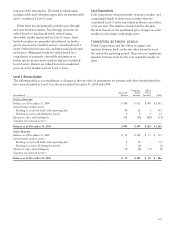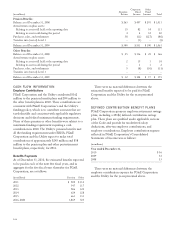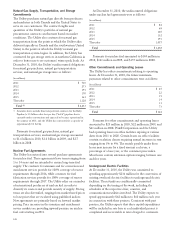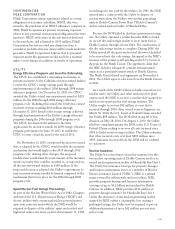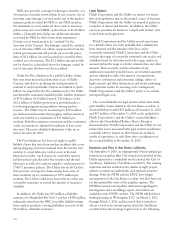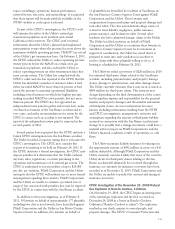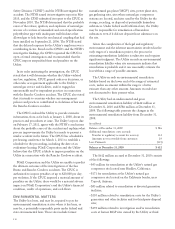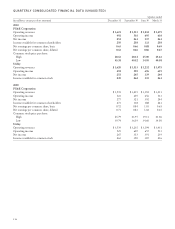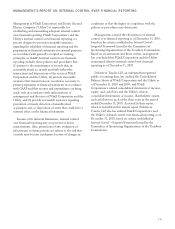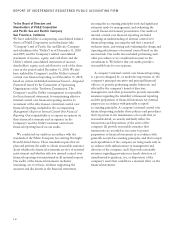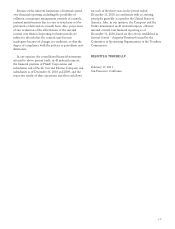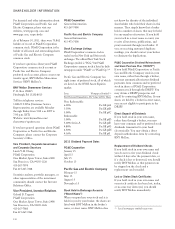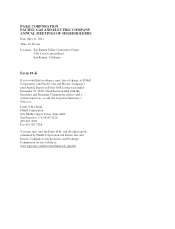PG&E 2010 Annual Report Download - page 117
Download and view the complete annual report
Please find page 117 of the 2010 PG&E annual report below. You can navigate through the pages in the report by either clicking on the pages listed below, or by using the keyword search tool below to find specific information within the annual report.parties (including those sites that are the subject of
remediation orders by environmental agencies or claims
by the current owners of the former MGP sites); and
• $62 million related to remediation costs for fossil
decommissioning sites.
The Utility has a program, in cooperation with the
California Environmental Protection Agency, to evaluate
and take appropriate action to mitigate any potential
environmental concerns posed by certain former MGPs
located throughout the Utility’s service territory. Of the
forty one MGP sites owned or operated by the Utility,
forty have been or are in the process of being investigated
and/or remediated, and the Utility is developing a strategy
to investigate and remediate the last site.
Of the $612 million environmental remediation
liability, the Utility expects to recover $316 million
through the CPUC-approved ratemaking mechanism that
authorizes the Utility to recover 90% of hazardous waste
remediation costs without a reasonableness review
(excluding any remediation associated with the Hinkley
natural gas compressor site) and $131 million through the
ratemaking mechanism that authorizes the Utility to
recover 100% of remediation costs for decommissioning
fossil-fueled sites and certain of the Utility’s transmission
stations (excluding any remediation associated with
divested generation facilities). The Utility also recovers its
costs from insurance carriers and from other third parties
whenever possible. Any amounts collected in excess of the
Utility’s ultimate obligations may be subject to refund to
customers.
Although the Utility has provided for known
environmental obligations that are probable and reasonably
estimable, estimated costs may vary significantly from
actual costs, and the amount of additional future costs may
be material to results of operations in the period in which
they are recognized. The Utility’s undiscounted future
costs could increase to as much as $1.2 billion if the extent
of contamination or necessary remediation is greater than
anticipated or if the other potentially responsible parties
are not financially able to contribute to these costs, and
could increase further if the Utility chooses to remediate
beyond regulatory requirements.
113


